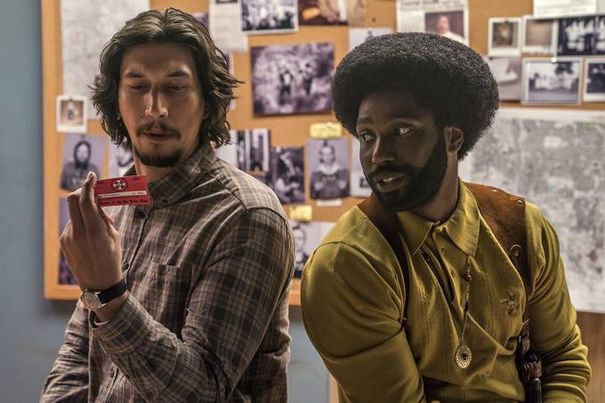Spike Lee and the strategic simplicity
Susy Freitas

With BlacKkKlansman, Spike Lee takes a double path while approaching American racism: on the one hand, he showcases his filmic language mastery, noticeable in the careful ordering of the images that characterizes his filmography; on the other, he allows deviations from a factual narrative about a black policeman infiltrated in the white supremacists group Ku Klux Klan. As a result, the film acquires a blockbuster vibe, becoming more enticing to an audience not necessarily drawn to this topic.
As a director for whom the representation of black people on the screen used to be more complex (see Do the Right Thing, 1989), Lee finds a historical moment in which the loss of subtleness becomes necessary. The complexity of the script and construction of the characters is damaged by this, as the narrative’s progression presents several easy solutions, especially in regard to representing the white extremists (in general, shallow and stereotypical). But these elements sound exciting to an audience that increasingly multiplies the focus of its attention, between social networks and blockbuster movies. We have, for example, the option of turning Flip Zimmerman (Adam Driver) into a Jew, or of including an unnecessary heteronormative love interest to make dilemmas denser. Even considering these questionable narrative choices, the feature contains powerful moments. The protagonist's conflict is well represented in scenes such as the one in which Ron (John David Washington), a plainclothes police officer, gets carried away by ideas shared by the black activist Kwame Ture (Corey Hawkins) or when he debates with his partner the legitimacy of "changing the system from within”.
Going beyond his traditional veneer, this choice is associated with an emerging antifascist strategy: to potentialize the reach of a content that, in its sense, is revolutionary, but with a surface that makes is more easily digestible. The director’s impatience with this choice (didactic, but less rich) is noticeable when we link this work to the current historical context, marked by backlash toward progressive themes. Lee gives up the metaphors but reinforces the main point he seeks to defend: institutionalized racism in American society (and not just there), which reflects much of the director’s and today viewers’ spirits.

